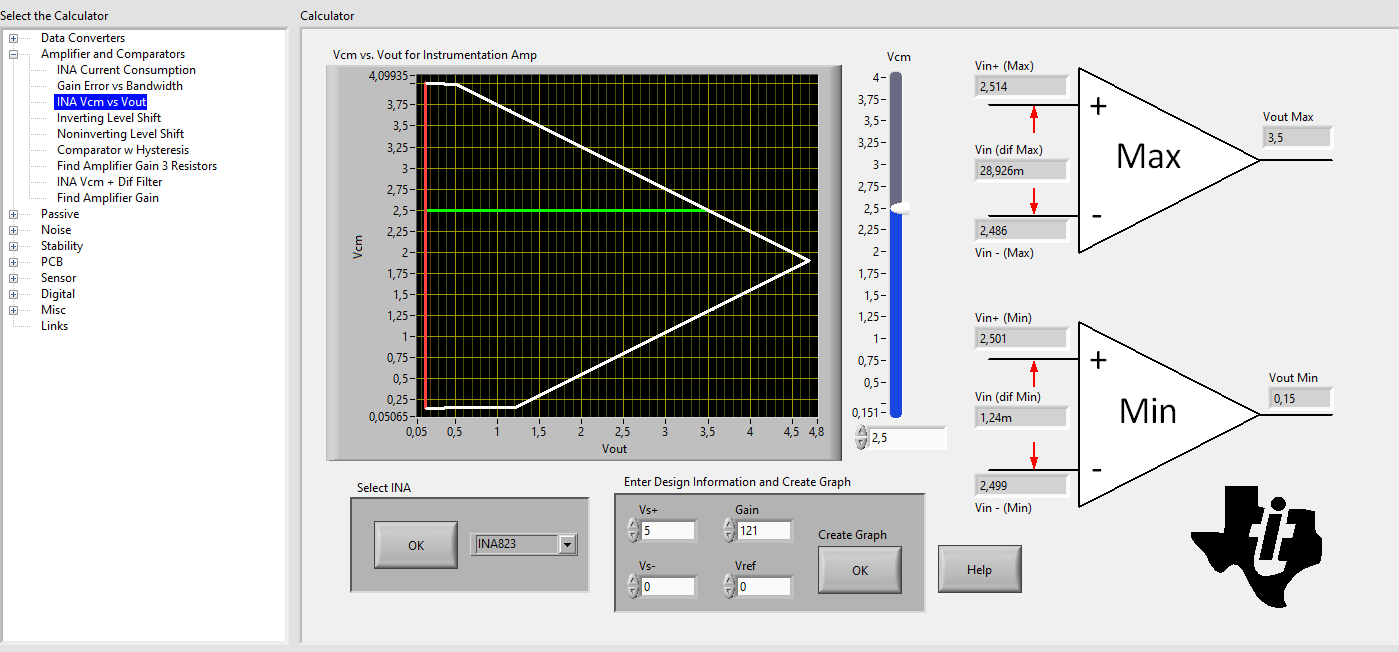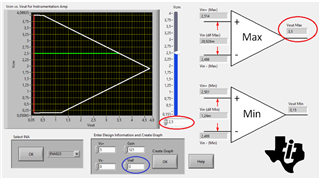Other Parts Discussed in Thread: INA849
I got following output from INA823DR for different input. Attached circuit in the attachment.
10mV in = 1.2V
20mV in = 2.4V
30mV in = 3.6V
40mV in = 3.8V
The expected output for 40mV in is 4.8V.
Looks like INA823DR is hitting the rail output.
From datasheet, output voltage swing +Vs - 0.15V = 5- 0.15 = 4.85V.
But it is hitting the rails at 3.8V around.
Pleas let me know your opinion. Thanks.




